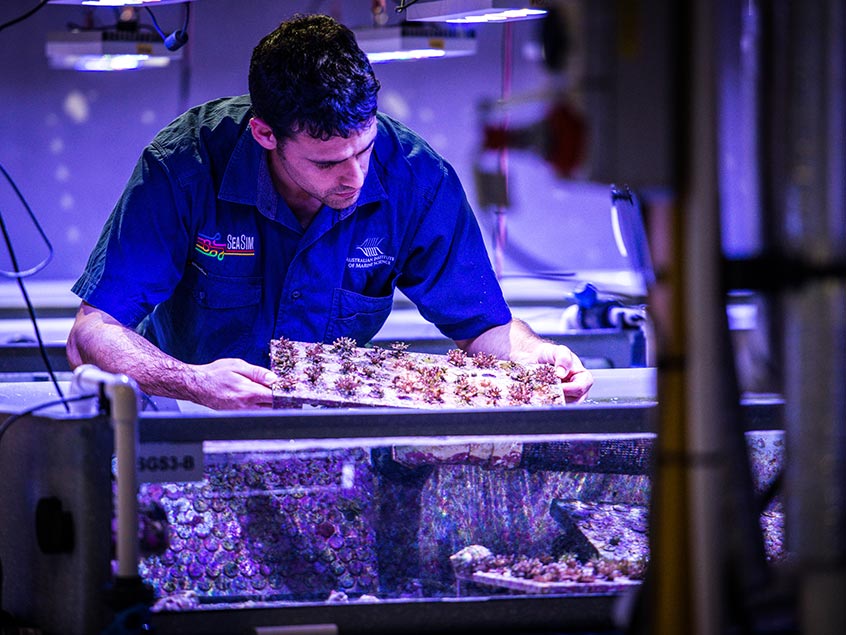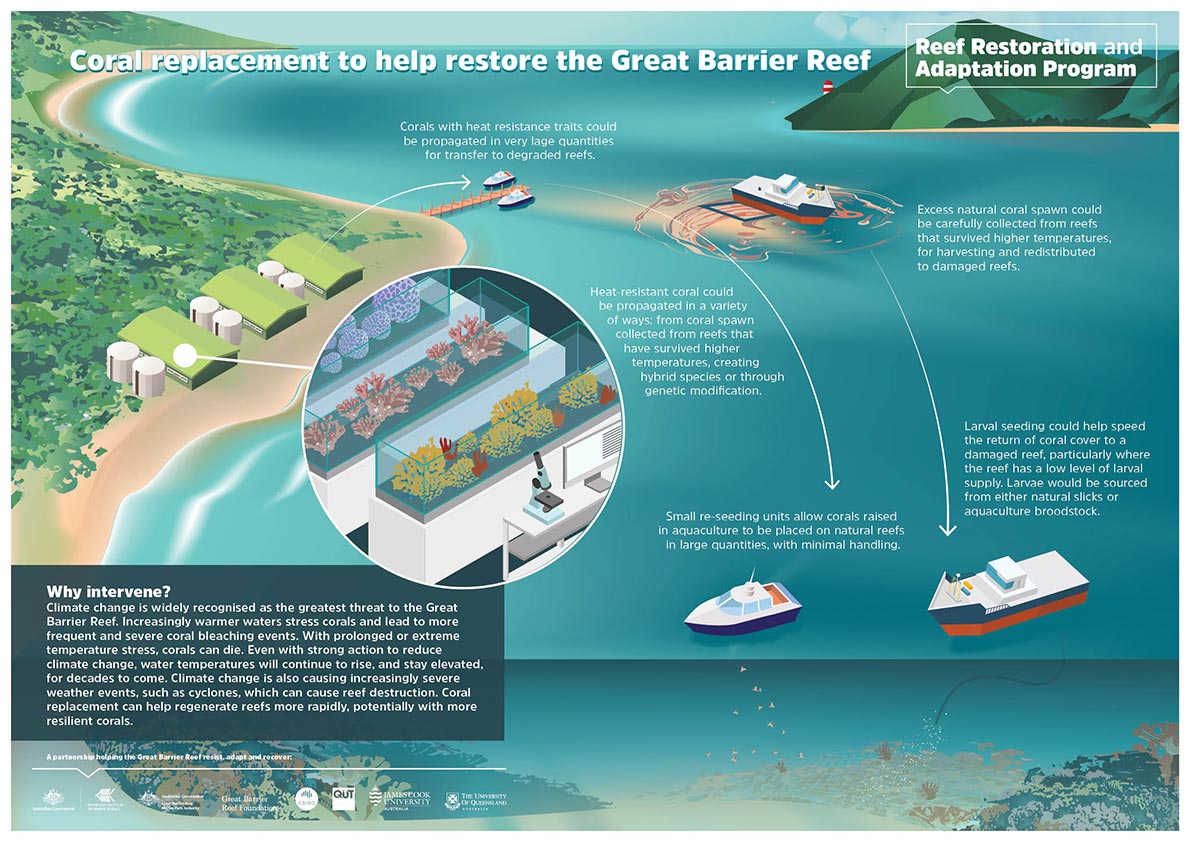Coral seeding by semiautomated aquaculture

Photo: Christian Miller, courtesy of AIMS.
Functional objective:
Enhance coral reproduction and recruitment on recovering reefs, following disturbance
Delivery method:
Semi-automated shore-based aquaculture
Deployment scale:
Small (a few hectares, a single reef)
Subprogram:
Coral seeding aims to speed the return of coral cover to a disturbed or damaged reef by increasing the number of available coral larvae for natural settlement, particularly where the reef has a low larval supply (e.g. following a large-scale bleaching event).
The aim is to increase the number of corals that ultimately recruit into reef populations.
A promising method of efficient dispersal is the use of small, re-seeding units that allow corals to be placed on reefs with minimal handling. This significantly reduces time spent re-locating and planting cultured corals.
This potential intervention would use semi-automated, shore-based aquaculture propagation of baby corals to seed corals onto reefs.
These corals could be propagated either sexually (through coral seeding) or asexually (harvesting coral fragments), using local brood stock.
This approach would amalgamate current aquaculture and automation technology with a combination of diver and semiautomated deployment methods from barges and small vessels.
It would require measures to ensure the introduced corals did not harm the local population.







